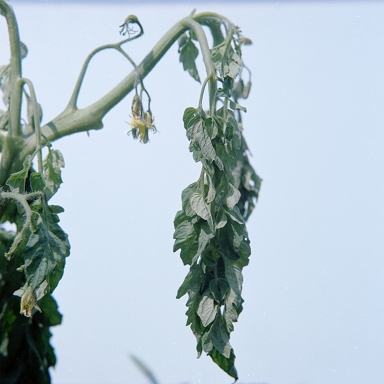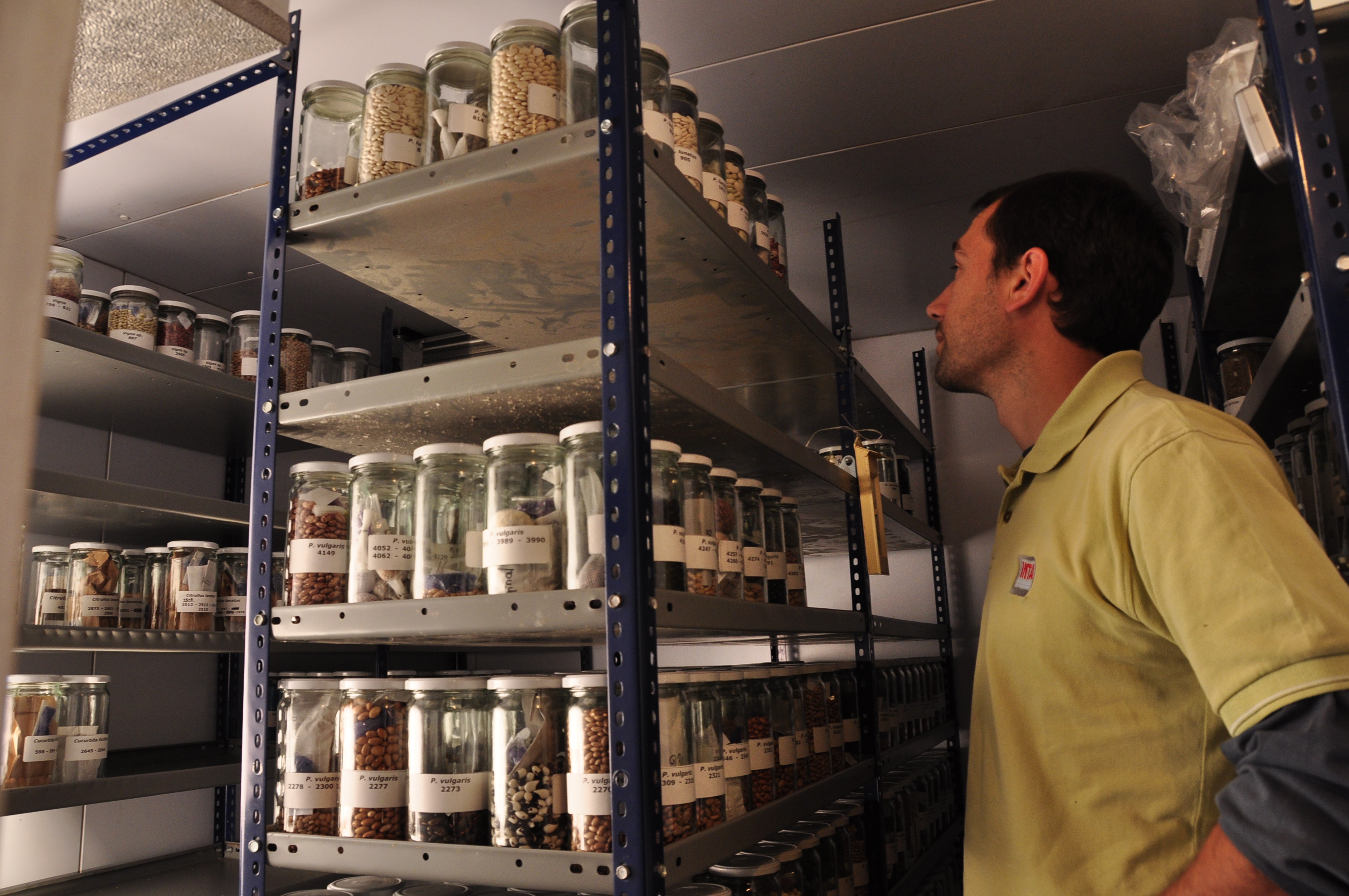|
Ralstonia Solanacearum
''Ralstonia solanacearum'' is an aerobic non-spore-forming, Gram-negative, plant pathogenic bacterium. ''R. solanacearum'' is soil-borne and motile with a polar flagellar tuft. It colonises the xylem, causing bacterial wilt in a very wide range of potential host plants. It is known as Granville wilt when it occurs in tobacco. Bacterial wilts of tomato, pepper, eggplant, and Irish potato caused by ''R. solanacearum'' were among the first diseases that Erwin Frink Smith proved to be caused by a bacterial pathogen. Because of its devastating lethality, ''R. solanacearum'' is now one of the more intensively studied phytopathogenic bacteria, and bacterial wilt of tomato is a model system for investigating mechanisms of pathogenesis. ''Ralstonia'' was until recently classified as ''Pseudomonas'', with similarity in most aspects, except that it does not produce fluorescent pigment like ''Pseudomonas''. The genomes from different strains vary from 5.5 Mb up to 6 Mb, roughly being 3.5 ... [...More Info...] [...Related Items...] OR: [Wikipedia] [Google] [Baidu] |
Erwin Frink Smith
Erwin Frink Smith (January 21, 1854 – April 6, 1927) was an American plant pathologist with the United States Department of Agriculture. He played a major role in demonstrating that bacteria could cause plant disease. Life and career Smith was born in Gilbert Mills, near Fulton, New York to Louisa Frink Smith and Rancellor King Smith. In 1870 he moved with his family to an 80-acre farm, which eventually included an apple orchard, in Clinton County, Michigan. The farm ultimately failed, causing the Smith family to move to North Plains Township, Michigan. Because he was no longer needed to help on the farm, Smith was finally able to attend Ionia High School, starting in 1876, when he was 22 years old. Smith read widely and was largely self-taught in botany and bacteriology. In 1881, while still in high school, he co-authored a book on the flora of Michigan titled "Cataloque of the Phaenogamous and Vascular Cryptogamous Plants of Michigan" with Charles F. Wheeler. In 1885 he pu ... [...More Info...] [...Related Items...] OR: [Wikipedia] [Google] [Baidu] |
Germplasm
Germplasm are living genetic resources such as seeds or tissues that are maintained for the purpose of animal and plant breeding, preservation, and other research uses. These resources may take the form of seed collections stored in seed banks, trees growing in nurseries, animal breeding lines maintained in animal breeding programs or gene banks, etc. Germplasm collections can range from collections of wild species to elite, domesticated breeding lines that have undergone extensive human selection. Germplasm collection is important for the maintenance of biological diversity and food security. See also * Animal genetic resources for food and agriculture *Conservation biology *Cryoconservation of animal genetic resources *Forest genetic resources *International Treaty on Plant Genetic Resources for Food and Agriculture * Plant genetic resources *Seed saving References *Day-Rubenstein, K and Heisey, P. 2003. Plant Genetic Resources: New Rules for International Exchange' * 63 p. * ... [...More Info...] [...Related Items...] OR: [Wikipedia] [Google] [Baidu] |
Overwinter
Overwintering is the process by which some organisms pass through or wait out the winter season, or pass through that period of the year when "winter" conditions (cold or sub-zero temperatures, ice, snow, limited food supplies) make normal activity or even survival difficult or near impossible. In some cases "winter" is characterized not necessarily by cold but by dry conditions; passing through such periods could likewise be called overwintering. Hibernation and migration are the two major ways in which overwintering is accomplished. Animals may also go into a state of reduced physiological activity known as torpor. Overwintering occurs in several classes of lifeform. Insects In entomology, overwintering is how an insect passes the winter season. Many insects overwinter as adults, pupae, or eggs. This can be done inside buildings, under tree bark, or beneath fallen leaves or other plant matter on the ground, among other places. All such overwintering sites shield the insect fr ... [...More Info...] [...Related Items...] OR: [Wikipedia] [Google] [Baidu] |
Solanum Dulcamara
''Solanum dulcamara'' is a species of vine in the genus ''Solanum'' (which also includes the potato and the tomato) of the family Solanaceae. Common names include bittersweet, bittersweet nightshade, bitter nightshade, blue bindweed, Amara Dulcis, climbing nightshade, felonwort, fellenwort, felonwood, poisonberry, poisonflower, scarlet berry, snakeberry, trailing bittersweet, trailing nightshade, violet bloom, and woody nightshade. It is native to Europe and Asia, and widely naturalised elsewhere, including North America. Overview It occurs in a very wide range of habitats, from woodlands to scrubland, hedges and marshes. ''Solanum dulcamara'' is a very woody herbaceous perennial vine, which scrambles over other plants, capable of reaching a height of 4 m where suitable support is available, but more often 1–2 m high. The leaves are 4–12 cm long, roughly arrowhead-shaped, and often lobed at the base. The flowers are in loose clusters of 3–20, 1–1.5 cm across, ... [...More Info...] [...Related Items...] OR: [Wikipedia] [Google] [Baidu] |
Rose
A rose is either a woody perennial flowering plant of the genus ''Rosa'' (), in the family Rosaceae (), or the flower it bears. There are over three hundred species and tens of thousands of cultivars. They form a group of plants that can be erect shrubs, climbing, or trailing, with stems that are often armed with sharp prickles. Their flowers vary in size and shape and are usually large and showy, in colours ranging from white through yellows and reds. Most species are native to Asia, with smaller numbers native to Europe, North America, and northwestern Africa. Species, cultivars and hybrids are all widely grown for their beauty and often are fragrant. Roses have acquired cultural significance in many societies. Rose plants range in size from compact, miniature roses, to climbers that can reach seven meters in height. Different species hybridize easily, and this has been used in the development of the wide range of garden roses. Etymology The name ''rose'' comes from L ... [...More Info...] [...Related Items...] OR: [Wikipedia] [Google] [Baidu] |
Olive
The olive, botanical name ''Olea europaea'', meaning 'European olive' in Latin, is a species of small tree or shrub in the family Oleaceae, found traditionally in the Mediterranean Basin. When in shrub form, it is known as ''Olea europaea'' 'Montra', dwarf olive, or little olive. The species is cultivated in all the countries of the Mediterranean, as well as in Australia, New Zealand, North and South America and South Africa. ''Olea europaea'' is the type species for the genus ''Olea''. The olive's fruit, also called an "olive", is of major agricultural importance in the Mediterranean region as the source of olive oil; it is one of the core ingredients in Mediterranean cuisine. The tree and its fruit give their name to the plant family, which also includes species such as lilac, jasmine, forsythia, and the true ash tree. Thousands of cultivars of the olive tree are known. Olive cultivars may be used primarily for oil, eating, or both. Olives cultivated for consumption ar ... [...More Info...] [...Related Items...] OR: [Wikipedia] [Google] [Baidu] |
Bell Pepper
The bell pepper (also known as paprika, sweet pepper, pepper, or capsicum ) is the fruit of plants in the Grossum Group of the species ''Capsicum annuum''. Cultivars of the plant produce fruits in different colors, including red, yellow, orange, green, white, chocolate, candy cane striped, and purple. Bell peppers are sometimes grouped with less pungent chili varieties as "sweet peppers". While they are fruits—botanically classified as berries—they are commonly used as a vegetable ingredient or side dish. Other varieties of the genus ''Capsicum'' are categorized as ''chili peppers'' when they are cultivated for their pungency, including some varieties of ''Capsicum annuum''. Peppers are native to Mexico, Central America, and northern South America. Pepper seeds were imported to Spain in 1493 and then spread through Europe and Asia. The mild bell pepper cultivar was developed in the 1920s, in Szeged, Hungary. Preferred growing conditions for bell peppers include warm, mois ... [...More Info...] [...Related Items...] OR: [Wikipedia] [Google] [Baidu] |
Nicotiana Tabacum
''Nicotiana tabacum'', or cultivated tobacco, is an annually grown herbaceous plant of the ''Nicotiana'' genus. The plant is tropical in origin, is commonly grown throughout the world, and is often found in cultivation. It grows to heights between 1 and 2 meters (3' to 6'). Research is ongoing into its ancestry among wild ''Nicotiana'' species, but it is believed to be a hybrid of ''Nicotiana sylvestris'', '' Nicotiana tomentosiformis'', and possibly '' Nicotiana otophora''. It is the most commonly grown of all plants in the genus ''Nicotiana,'' the plants' leaves commercially grown to be processed into tobacco. Description It is an annual plant that grows high and is sticky hairy on all parts. The stems are thick and not very branched. The leaves can be over long with the blades ovate to elliptical, or obovate, pointed towards the front and, at the base, run down the stem or are sessile, encompassing the stem. The scented inflorescences are multi-branched panicles. The flow ... [...More Info...] [...Related Items...] OR: [Wikipedia] [Google] [Baidu] |
Pelargonium
''Pelargonium'' () is a genus of flowering plants that includes about 280 species of perennials, succulents, and shrubs, commonly called geraniums, pelargoniums, or storksbills. '' Geranium'' is also the botanical name and common name of a separate genus of related plants, also known as cranesbills. Both genera belong to the family Geraniaceae. Carl Linnaeus originally included all the species in one genus, ''Geranium'', and they were later separated into two genera by Charles Louis L'Héritier de Brutelle in 1789. While ''Geranium'' species are mostly temperate herbaceous plants, dying down in winter, ''Pelargonium'' species are evergreen perennials indigenous to warm temperate and tropical regions of the world, with many species in southern Africa. They are drought and heat tolerant, but can tolerate only minor frosts. Some species are extremely popular garden plants, grown as houseplants and bedding plants in temperate regions. They have a long flowering period, with flowers m ... [...More Info...] [...Related Items...] OR: [Wikipedia] [Google] [Baidu] |
Musa (genus)
''Musa'' is one of two or three genera in the family Musaceae. The genus includes flowering plants producing edible bananas and plantains. Around 70 species of ''Musa'' are known, with a broad variety of uses. Though they grow as high as trees, banana and plantain plants are not woody and their apparent " stem" is made up of the bases of the huge leaf stalks. Thus, they are technically gigantic herbaceous plants. ''Musa'' species are used as food plants by the larvae of some Lepidoptera species, including the giant leopard moth and other ''Hypercompe'' species, including '' H. albescens'' (only recorded on ''Musa''), '' H. eridanus'', and '' H. icasia''. Description Banana plants represent some of the largest herbaceous plants existing in the present, with some reaching up to in height (59 feet (18 meters) in the case of '' Musa ingens''). The large herb is composed of a modified underground stem (rhizome), a false trunk of tightly rolled petioles, a netw ... [...More Info...] [...Related Items...] OR: [Wikipedia] [Google] [Baidu] |
Eggplant
Eggplant ( US, Canada), aubergine ( UK, Ireland) or brinjal (Indian subcontinent, Singapore, Malaysia, South Africa) is a plant species in the nightshade family Solanaceae. ''Solanum melongena'' is grown worldwide for its edible fruit. Most commonly purple, the spongy, absorbent fruit is used in several cuisines. Typically used as a vegetable in cooking, it is a berry by botanical definition. As a member of the genus ''Solanum'', it is related to the tomato, chili pepper, and potato, although those are of the New World while the eggplant is of the Old World. Like the tomato, its skin and seeds can be eaten, but, like the potato, it is usually eaten cooked. Eggplant is nutritionally low in macronutrient and micronutrient content, but the capability of the fruit to absorb oils and flavors into its flesh through cooking expands its use in the culinary arts. It was originally domesticated from the wild nightshade species ''thorn'' or ''bitter apple'', '' S. incanum'',Tsao ... [...More Info...] [...Related Items...] OR: [Wikipedia] [Google] [Baidu] |






